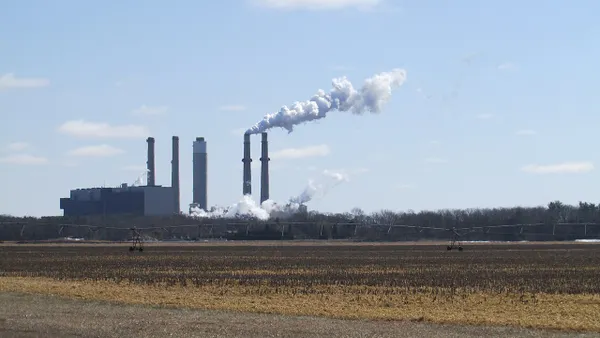Dive Brief:
- The U.S. added over 13,500 of new generating capacity in 2013, according to the Energy Information Administration (EIA). That's below half of the capacity added the year before.
- Natural gas accounted for over 50% of the new capacity. 6,861 MW of natural gas-fired capacity were added in 2013, down from 9,210 MW in 2012.
- Solar PV accounted for 22% of new capacity, up from 6% in 2012 -- but those numbers don't include any distributed capacity under 1 MW. While 2,193 MW of utility-scale solar capacity were added in 2013, an estimated 1,900 MW of distributed solar capacity were also added.
- Coal made up 11% of new capacity, all on the shoulders of two delayed power plant projects -- the 937 MW Sandy Creek Energy Station in Texas and the 571 MW Edwardsport integrated gasification combined-cycle plant in Indiana -- that came to fruition in 2013.
- Wind made up almost 8% of new capacity. After adding 12,855 MW in 2012, wind tumbled down to 1,032 MW -- all due to the expiration of federal production tax credit.
Dive Insight:
Natural gas and solar were the clear winners in 2013, with wind taking a hit. The mooted extension of the wind production tax credit would go a long way to bringing wind back into the picture.
There are also signs of a changing resource mix in California -- 47% of all new capacity added in 2013 was located in California. Their need for new capacity is driven by the retirement of the San Onofre nuclear plant, as well as the state's once-through cooling water policy and lofty renewable portfolio standard.














